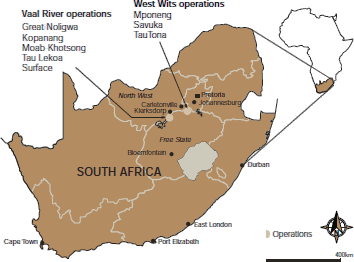 | Mponeng is a gold mine in South Africa's North West Province, about 65 km southwest of Johannesburg, owned by AngloGold Ashanti. It is also currently the world's deepest mine. It extends over 4 kilometres (2.5 mi) below the surface, and is considered to be one of the most substantial gold mines in the world.
Mponeng means 'look at me' in the local Sotho language. Formerly the Western Deep Levels South Shaft, or Shaft No 1, Mponeng is the most recently sunk of the three former Western Deep Levels mines.
The global record was broken in 2009 after digging 3,777m. With the current sink, the mine would go down to 4,100m. Plans could take the Mponeng Mine to 4,500m below the surface. | |


























No comments:
Post a Comment